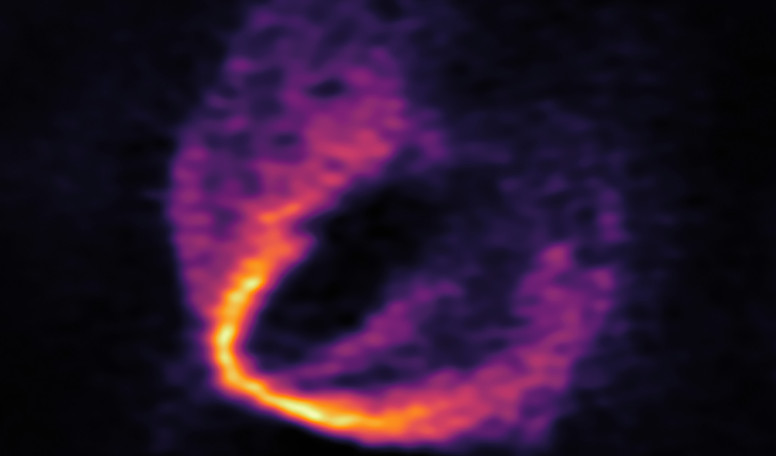Using a novel planet-finding technique, the strongest evidence yet of three young planets-in-the-making has been imaged by two independent teams of astronomers using the Atacama Large Millimeter/submillimeter Array (ALMA).
These fledgling planets – known as protoplanets – are still enshrouded in a giant disc of gas and dust surrounding a young infant star at its centre. These proto-systems will eventually flourish into fully-formed planetary systems, much like our own, but at the moment detecting planets in such an early stage of evolution has proven incredibly difficult and as yet, there have been no unambiguous detections before now.
This new discovery has been made possible by identifying disturbances in the flow of gas within a protoplanetary disc around HD 163296, a young star about 330 light-years from Earth. This pre-main sequence star has roughly twice the mass of the Sun but is just four million years old — so around a thousandth of the age of the Sun.
“Measuring the flow of gas within a protoplanetary disc gives us much more certainty that planets are present around a young star,” said Christophe Pinte of Monash University in Australia and Institut de Planétologie et d'Astrophysique de Grenoble (Université de Grenoble-Alpes/CNRS) in France, and lead author on one of the two recently published research papers. “This technique offers a promising new direction to understand how planetary systems form.”
The technique that the two teams used was the study of subtle changes in the wavelength of light from carbon monoxide (CO) gas spread throughout the disc. CO emits a very distinctive millimetre-wavelength light that ALMA can observe in great detail, and it revealed swirling motions of gas akin to how water flows around a rock in a river, which signified the existence of three planets located approximately 12 billion, 21 billion and 39 billion kilometres from HD 163296.
The motion of gas around a star when no planets are present has a very simple, predictable pattern that is nearly impossible to alter a unless a relatively massive object is on hand to create such disturbances.
“We looked at the localised, small-scale motion of gas in the star’s protoplanetary disc. This entirely new approach could uncover some of the youngest planets in our galaxy, all thanks to the high-resolution images from ALMA,” said Richard Teague, an astronomer at the University of Michigan and principal author on the other paper that identified the two closest in protoplanets.
By refining this method, the teams hope to better understand how atmospheres are formed and which elements and molecules are incorporated into a planet from birth.











